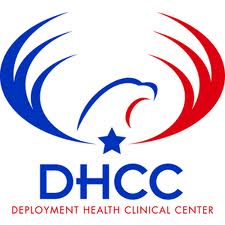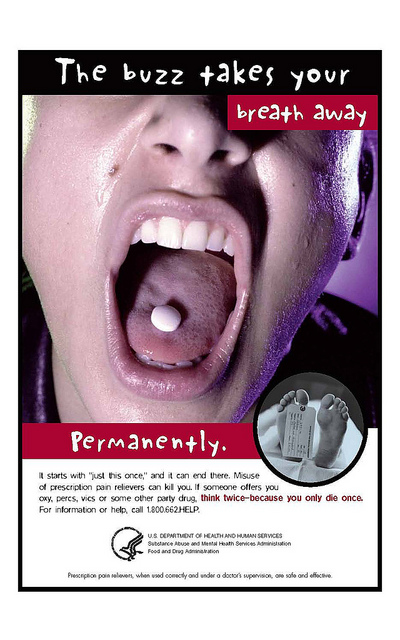Desperately Seeking Disclosure: What Happens When Public Funds Go To Private PR Firms?
In some ways, Armstrong Williams got a bad rap.
The conservative Black commentator, who was paid $240,000 by the U.S. Department of Education to advertise and advocate for the controversial "No Child Left Behind" law, lost his syndicated newspaper column and was pilloried for not disclosing the payment.
Williams seriously betrayed the public trust. But he was a small fry -- a subcontractor on the $1 million deal between the Education Department and Ketchum, one of the world's largest public relations agencies.
At first, Ketchum refused to talk to reporters. Then they blamed Williams. "We would assume that the commentator/pundit would disclose," senior partner Lorraine Thelian said. Nearly two weeks later, Ketchum announced "a new policy for the signing and authorization of contracts with spokespeople," and requirements for subcontractors "to abide by the agency's ethical standards." Not the most confidence-inspiring response, especially given its vagueness.
Following revelations that at least two other commentators besides Williams received public funds, and two Government Accountability Office rulings that faux TV news reports called video news releases (VNRs) produced for federal agencies violated the ban on covert government propaganda, federal public relations spending received some well-deserved scrutiny.
The U.S. House Committee on Government Reform's minority office searched federal procurement records for contracts with major PR firms since 1997. They identified Ketchum as the largest recipient of recent PR spending, with contracts totaling more than $100 million. They also found that PR spending doubled during the first Bush term, to $250 million. Nine firms received at least $1 million in public funds in a single year, since 1997.
The ethics code of the Public Relations Society of America, the largest PR trade organization, includes admonitions "to build trust with the public by revealing all information needed for responsible decision making," to "be honest and accurate," to "reveal the sponsors for causes and interests represented," and to "avoid deceptive practices."
Nice sentiments, but what really happens when public funds go to private PR firms? When I asked the nine firms in the million-dollar league, responses ranged from cautious answers to deafening silence.
 Logo Widmeyer designed for the Defense Dept.The two "best" firms responded to my questions, but wouldn't share contract agreements or "deliverables" -- products like studies, brochures and VNRs -- not already publicly available:
Logo Widmeyer designed for the Defense Dept.The two "best" firms responded to my questions, but wouldn't share contract agreements or "deliverables" -- products like studies, brochures and VNRs -- not already publicly available:
- Widmeyer Communications - $7.4 million in federal contracts since 1997
- Burson-Marsteller - $1.9 million
Widmeyer has worked for the Selective Service System; Federal Trade Commission; Health and Human Services Department; Education Department; National Institute for Literacy; Farm Service Agency; and Defense Department, for their Deployment Health Clinical Center.
Assistant Vice-President Scott Ward said Widmeyer "never uses paid third-party spokespeople." The firm produces video footage, but not ready-to-air VNRs.
Burson-Marsteller has worked for the Census Bureau; Bureau of Engraving and Printing, on the $20 bill redesign; Treasury Department; and Postal Service, on "Managing Communication During the Anthrax Crisis."
Global public affairs chief Richard Mintz said Burson-Marsteller produces VNRs, but clearly marks them as to their source. He said the firm has not used paid spokespeople "per se," but has signed contracts with third parties like senior and minority groups, to reach target populations.
Burson-Marsteller's other work includes directing "crisis communications" for McDonald's and the National Cattlemen's Beef Association, on mad cow disease; running the front group "European Women for HPV Testing" for the U.S. biotechnology company Digene; creating the "National Smokers Alliance" for Philip Morris, to combat smoking restrictions; infiltrating activist groups opposing the milk hormone BGH, for Monsanto subsidiary Nutra-Sweet and Eli Lilly; and boosting Indonesia's "human rights and environmental image" after a 1991 massacre in East Timor.
 Ad "Equals Three" designed for Health and Human Services.The next two firms returned calls, but did not answer questions:
Ad "Equals Three" designed for Health and Human Services.The next two firms returned calls, but did not answer questions:
- Equals Three Communications - $23.8 million
- Hill & Knowlton - $19.2 million
Equals Three has worked for the National Institutes of Health, on Colorectal Cancer Awareness Month; National Institute for Mental Health; and National Highway Traffic Safety Administration.
Vice-President of PR Kimberly Marr complained (a week after I first contacted them) about "the extensive nature of your questions and the short timeline." She said, "Everything ... is in the public domain."
What public domain is unclear, however, as Nexis news database, PR trade publication, and Internet searches revealed little. Even materials posted on Equal Three's website are sized and cropped in such a way that it's difficult to determine who they were produced for.
Hill & Knowlton has worked for the General Services Administration, on the "Dedication of the Ronald Reagan Building and International Trade Center" in Washington DC.
Director of Business Development and Marketing Lily Loh said my questions involved "proprietary information that we cannot share due to client confidentiality," although some work is "available in the public record." (Searches pulled up the GSA work only.)
Hill & Knowlton's other work includes pushing the first Gulf War, for their client Kuwait; flacking for Indonesia during the brutal occupation of East Timor; helping organize the industry-funded Council for Tobacco Research, which downplayed the dangers of smoking; and doing damage control for Wal-Mart in California.
The following five firms -- the majority of those in the million-dollar league -- did not return repeated phone calls:
- Ketchum - $100.5 million
- Fleishman-Hillard - $77 million
- Ogilvy PR Worldwide - $1.6 million
Ketchum has worked for the Education Department; Internal Revenue Service; U.S. Army, to "reconnect the Army with the American people" and boost recruiting around its 225th birthday; and Health and Human Services Department, to "change the face of Medicare," promote long-term health care planning, encourage preventative care, and present home care information. Large increases in Ketchum's federal work since 2003 mirror the Centers for Medicare and Medicaid Services' PR spending boost, suggesting that their Medicare work may be more extensive than is currently known.
The firm produced a VNR for the Education Department that was widely criticized, as it "comes across as a news story but fails to make clear the reporter involved was paid with taxpayer money," explained Associated Press. The VNR promoted tutoring programs under "No Child Left Behind," and included then-Education Secretary Rod Paige and PR flack Karen Ryan, who misrepresented herself as a reporter.
Fleishman-Hillard has worked for the Social Security Administration; Library of Congress; Environmental Protection Agency; and Defense Department, to introduce "managed care" to employees, due to "rising medical costs" and "decreasing resources." One challenge on that contract, the firm noted, was "the anger and frustration of the retired military community who were now required to pay an annual fee for guaranteed access to health care they said was promised them by their recruiter as a free lifetime benefit."
The firm also worked for the Office of National Drug Control Policy, to "debunk the misconception that marijuana was harmless." Part of that contract involved producing VNRs, which were later found to be covert propaganda, because ONDCP "did not identify itself to the viewing audience as the producer and distributor of these prepackaged news stories."
In addition, Los Angeles' city controller has accused Fleishman-Hillard of overbilling the city's Water and Power Department by $4.2 million. Several former employees said they were told to inflate the hours billed to the city. One described Fleishman-Hillard's attitude as, "Get as much as you can because these accounts may dry up tomorrow."
Ogilvy PR has worked for the National Heart, Lung, and Blood Institute; and Office of National Drug Control Policy, on their National Youth Anti-Drug Media Campaign. Ogilvy is now working for the Homeland Security Department, "to provide real journalists for its biennial mock terrorist exercise." The director of the Project for Excellence in Journalism said that contract "raises potential future conflicts even if the reporter doesn't now cover the governmental entity writing the check."
Last month, two former executives of the related marketing firm Ogilvy & Mather were found guilty of conspiracy and false claims, for inflating labor costs on the ONDCP account. According to the indictment, the executives "directed certain Ogilvy employees to revise time sheets and caused falsified time sheets to be submitted to the government."
Rounding out the million-dollar league are Matthews Media Group ($67.9 million, National Cancer Institute and National Institutes of Health) and Porter-Novelli ($59.3 million, National Institutes of Health, National Institute of Mental Health and Centers for Disease Control).
If, as Burson-Marsteller's Richard Mintz told me, the "public education campaigns" PR firms undertake for the government are "essential," why are they so reticent to discuss them? Even federal PR contracts obtained through Freedom of Information Act requests, such as the Ketchum / Williams agreement, are extensively redacted.
As the House Government Reform Committee noted, "Not all government PR contracts are problematic," but they must be "authorized by Congress and conducted in a fashion that does not mislead the public." If there's anything to be learned from the recent scandals, it's that more must be done to ensure the transparent and proper use of public dollars by private PR firms.
Uncovering how public dollars are used by private PR firms is an ongoing research project that you can help with! Each PR firm's name, above, is linked to a SourceWatch article on the firm, which includes a year-by-year breakdown of federal PR spending going to that firm. Become a SourceWatch volunteer contributor and help develop our articles on U.S. government PR contracts.





Comments
These firms offers
These firms offers circuits very similar to money-laundering. Though it not so but many bad people, the whole organizations (at times even state) are engaged money-laundering through peace funds of the help to people or animals, and as protecting the nature.
Email me for any questions.
adminlex@firehost.com
[http://replicawatches.host.sk ReplicaMagazine]
means
Propaganda fits Fascist governments, not democratic ones.